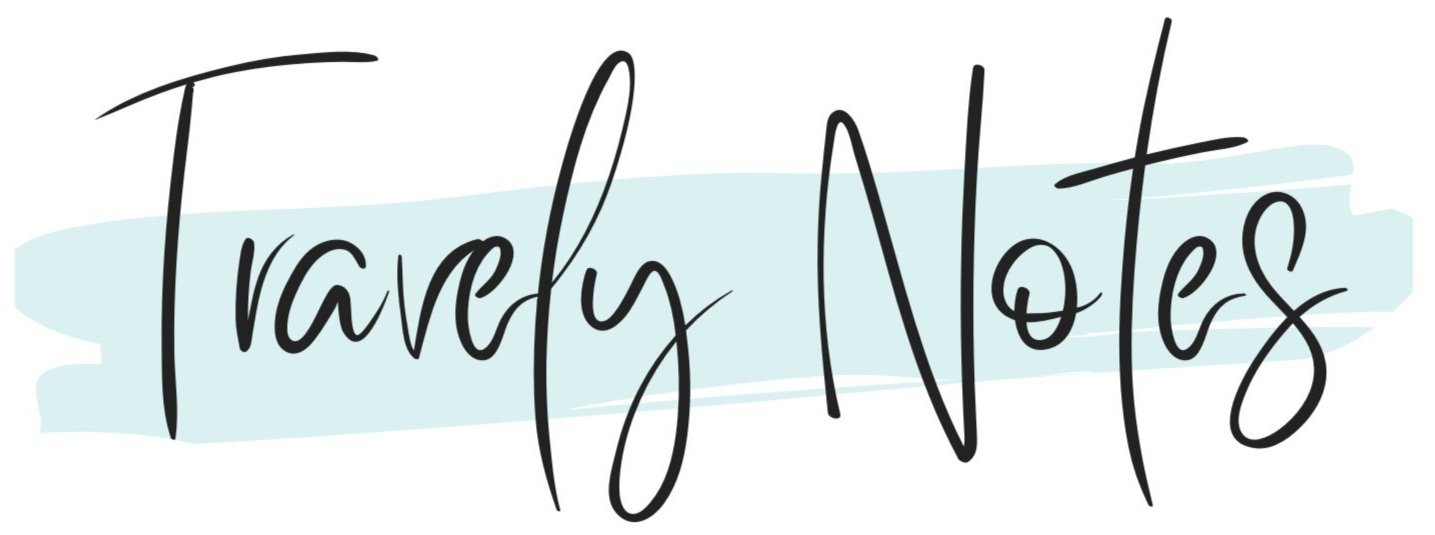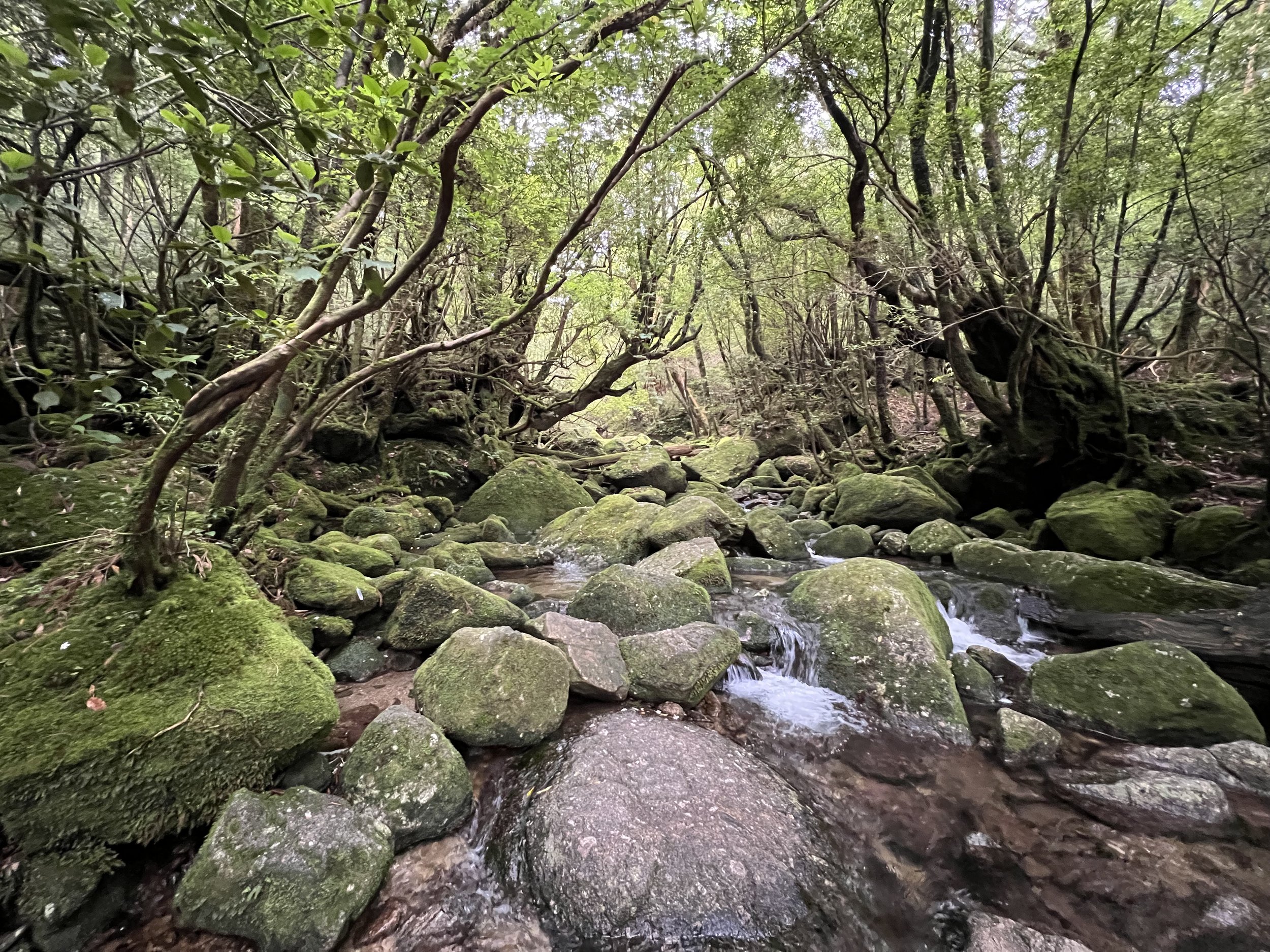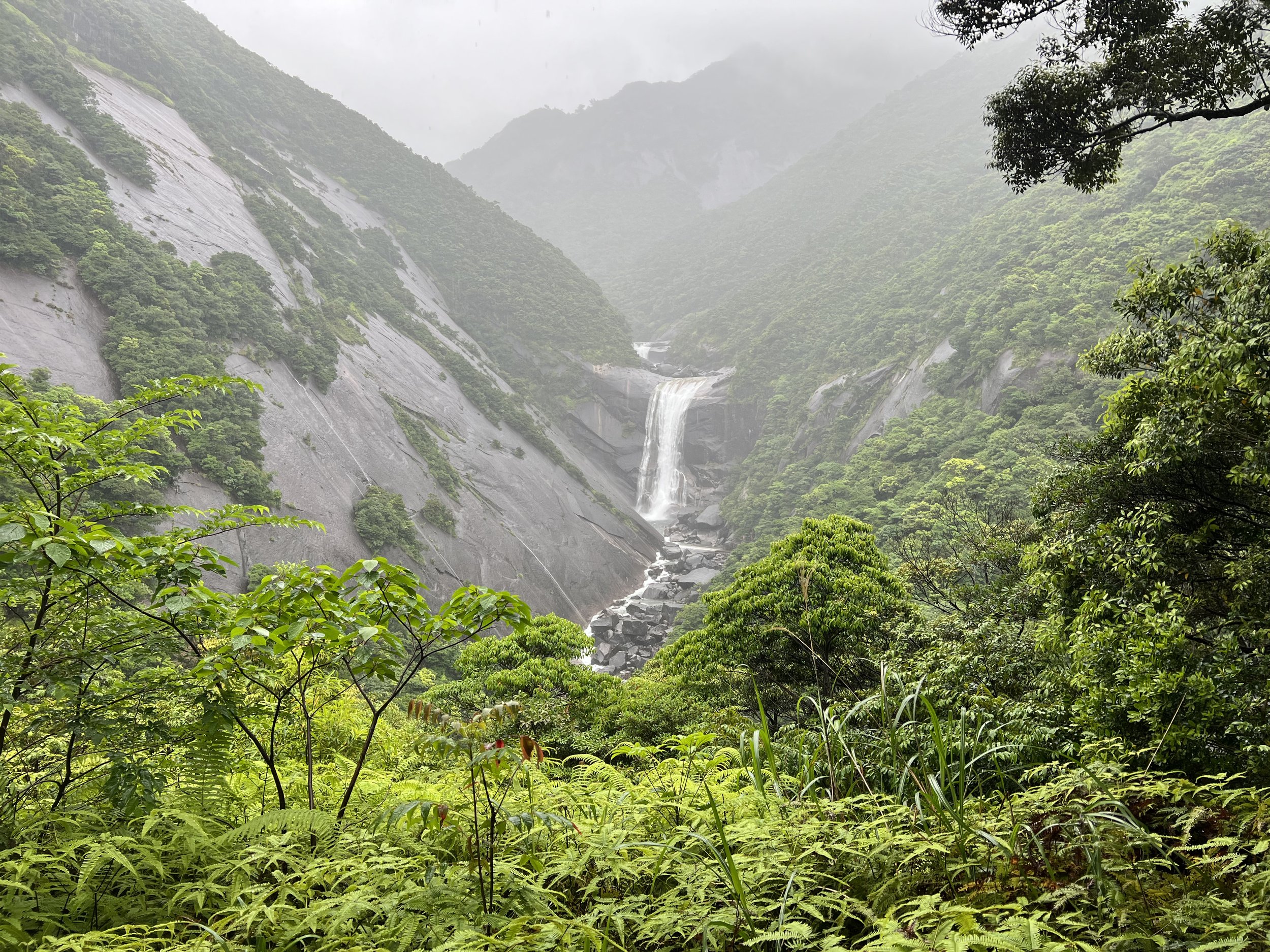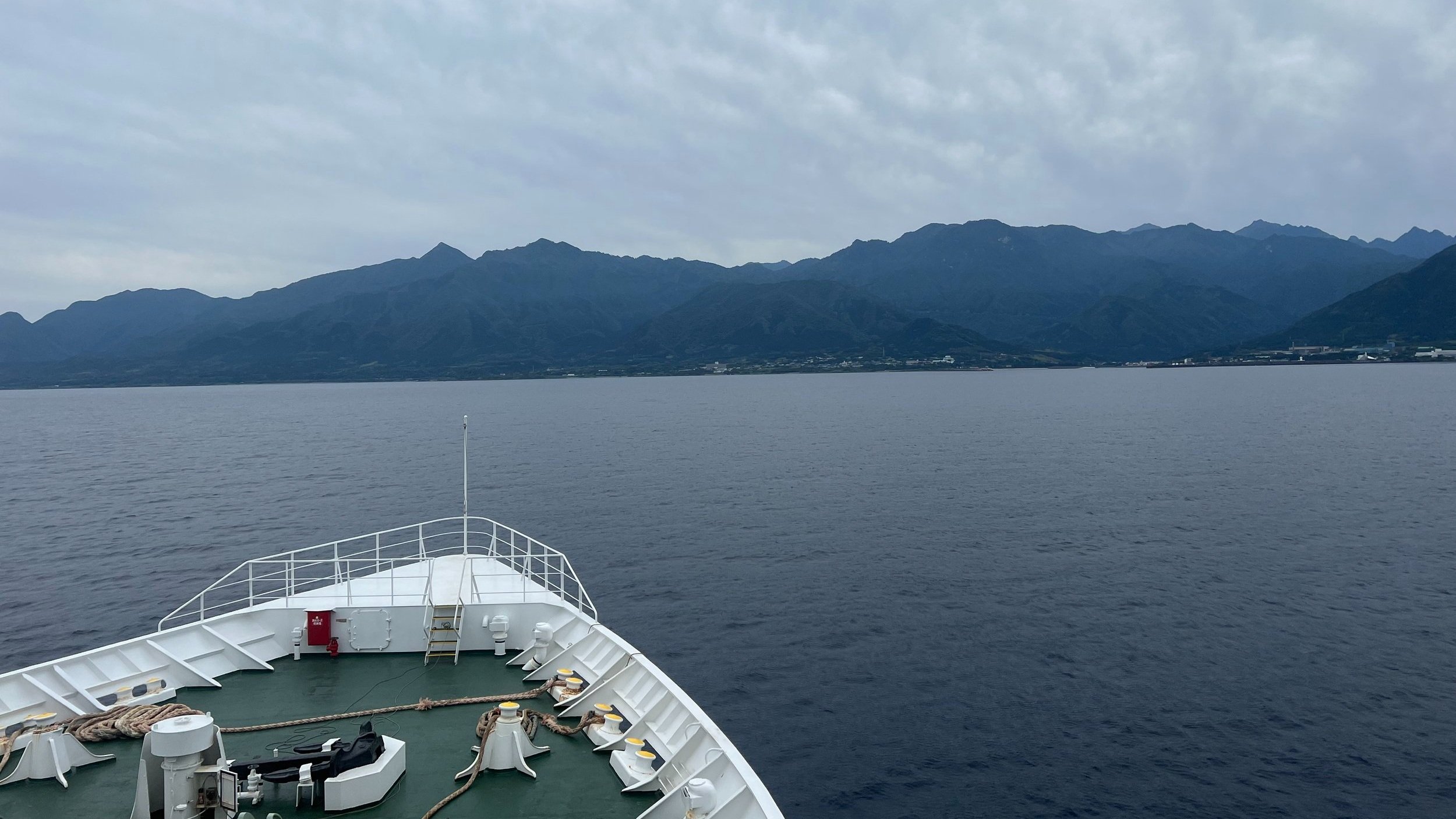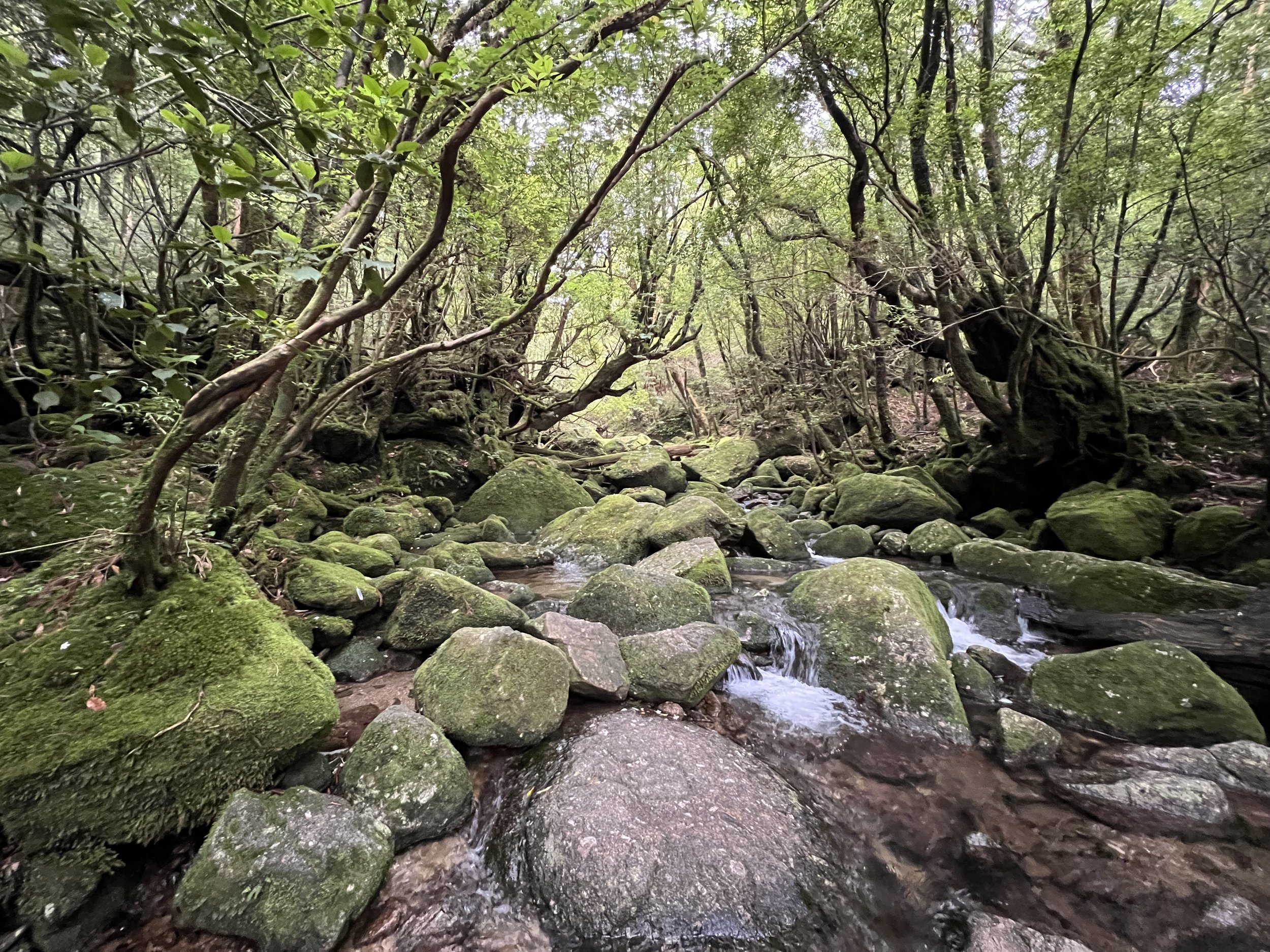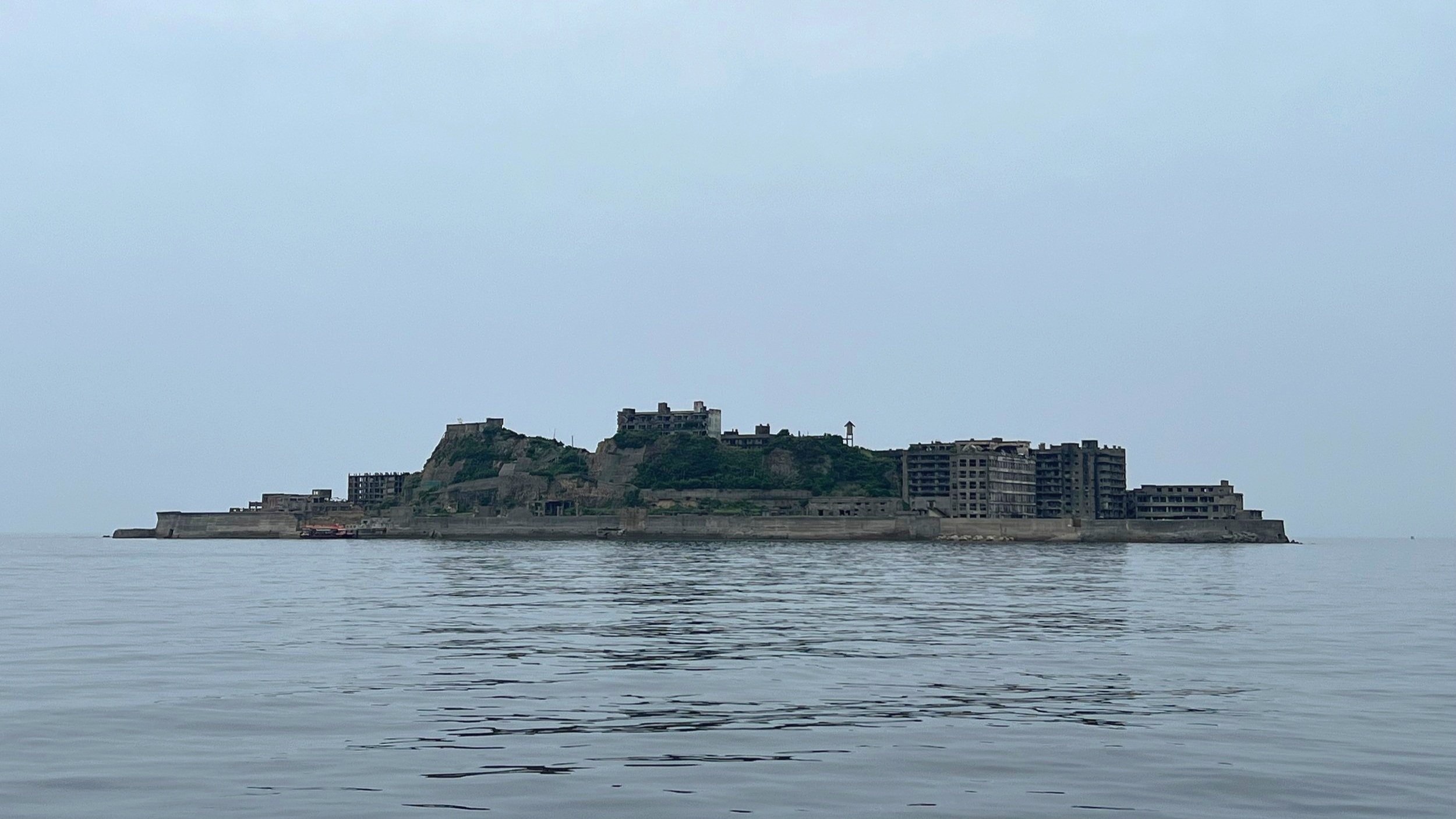Yakushima Travel Guide: Top Things to Do and Essential Tips in Japan’s Nature Gem
Yakushima (屋久島) is one of my favourite destinations in Japan! Located in Kagoshima Prefecture, Kyushu, this wild and mysterious island is a must-visit for nature lovers and is famous for its lush forests that inspired Studio Ghibli's Princess Mononoke. As a Ghibli fan, this was my main motivation for visiting this island, but I discovered that it had much more to offer than I had expected, with its ancient cedar trees, stunning hiking trails and more hidden gems. Whether you’re a Ghibli enthusiast or an outdoor adventurer, Yakushima offers unforgettable experiences I’d highly recommend!
Things to Do and See in Yakushima
1/ Hiking in the Ancient Forests of Yakushima
Yakushima's mountainous and wooded interior offers a multitude of hiking adventures in its UNESCO World Heritage Area. Below is an introduction to Yakushima’s three most popular hikes.
Shiratani Unsuikyo Ravine
The Shiratani Unsuikyo ravine (白谷雲水峡) was my favourite place in Yakushima and one of most beautiful hikes I have ever done. With its ancient trees and moss-covered stones, the Shiratani Unsuikyo ravine exudes a unique and mystical atmosphere. No wonder it was the inspiration for the famous animated film Princess Mononoke, and you can easily see the resemblance once you enter this beautiful, lush forest.
It takes around 30 minutes by car to reach the car park at the entrance of the ravine from the port of Minayoura. The Shiratani Unsuikyo ravine is also accessible by bus, but know that there are only 7 buses a day, so check the timetable in advance here if you choose this transport option.
You can read my article dedicated to the Shiratani Unsuikyo ravine for more information about this hike and additional photos of this enchanting place.
Yakusugi Land
Yakusugi Land (ヤクスギランド) is another must-visit place in Yakushima. As it name indicates, this natural park is known for having a number of yakusugi (more than 1000 year old Yakushima cedars) on its ground. There are 4 different circular hiking trails, from 30 min to 150 min, so you can choose which path to explore depending on the time you have and your hiking level (the two shortest trails do not require hiking shoes).
If you have a car, after visiting Yakusugi Land, I recommend you drive a few minutes further in the mountains to see Kigensugi (紀元杉), another of Yakushima's giant cedars, a couple of minutes from the side of the road.
It takes around 30 minutes by car to reach the car park at the entrance of Yakusugi Land from Anbo and 50 minutes from Miyanoura port. Like Shiratani Unsuikyo ravine, Yakusugi Land is also accessible by bus, but there are only 2 buses a day, from Anbo, so check (see the timetable here).
You can read my article dedicated to Yakusugi Land for more information about this place and additional pictures.
Jomonsugi Trek
This hike takes you to Jomonsugi (縄文杉), the most famous of the Yakushima cedars, the oldest tree in Japan, between 2,200 and 7,200 years old. This hike is suitable for average hikers, but is very long, taking between 9 and 11 hours to complete.
The hike is only accessible by bus from the Yakusugi museum near Anbo. Between 1 March and 30 November, buses run from 04:30 to 06:00 and return buses run from 15:00 to 18:00. Bus tickets can be purchased in advance from the island's tourist information kiosks.
Unfortunately I didn't have time to do the Jomonsugi trek, but I hope to do it one day if I return to Yakushima.
2/ Observing Yakushima’s Wildlife
What I found absolutely incredible when visiting Yakushima is that as soon as you drive in the mountain area, you encounter deer and monkeys on or near the roads, as they are not very busy. They have no fear of cars and don't even stray from the road, or only at a leisurely pace, from my personal experience.
Beyond the mountain roads that provide access to the hikes mentioned above, the north-western section of the ring road around Yakushima is a safari paradise. As there are no villages in this part of Yakushima, the animals come down from the mountains, so you may come across many deer and monkeys lounging on the road. So be sure to explore this part of Yakushima and drive slowly!
Moreover, from May to July, sea turtles come ashore on the northwest and southwest beaches of Yakushima, such as Inakahama Beach (いなか浜), to lay their eggs. Access to the nesting areas are restricted to protect them, but you may be able to join some guided eco-tours to see them.
3/ Go on a Waterfall Hunt
There are several beautiful waterfalls on Yakushima, the most popular and accessible being Senpiro Waterfall (千尋の滝), Torokki Waterfall (トローキの滝) which falls directly into the sea, and Ohko Waterfall (大川の滝).
Senpironotaki Waterfall after a heavy rainfall
The Senpiro Waterfall viewing area can be reached in a minute's walk from a small car park, and Torokki Waterfall is just a few minutes' drive from Senpiro Waterfall next to the Yakushima’s circular road. On the western side of Yakushima, you can visit the 88m-high Ohko Waterfall (大川の滝) that has been selected as one of Japan's top 100 waterfalls. There is a small car park nearby, the waterfall is also 5-minute walk from bus stop no. 129 "Ohko no Taki".
4/ Go Diving/Snorkeling in Summer
With its sandy beaches and clear sea water, Yakushima is also an ideal destination for a summer beach holiday. I haven't had the chance to experience it myself, but I've been told that the diving and snorkelling are excellent in Yakushima. From my research, Isso beach (一湊海水浴場) and Harutahama beach seem to be the best places to snorkel in Yakushima.
5/ Soak in an Onsen
If you want a super local onsen experience, you can visit Onoida Onsen (尾之間温泉) and soak in its super warm hot spring water (about 49℃). Know that it is not a fancy onsen but a small and very old onsen where locals go frequently, and you will have to bring your own towel and soap, or rent it at the entrance. The entrance fee is ¥300 and the onsen is open from 7am to 9pm and is closed on Monday mornings.
Onoida Onsen
Another onsen recommended to me by locals during my visit to Yakushima is Hirauchi Kaichu Onsen (平内海中温泉). Located on the south coast of the village of Hirauchi, this onsen has small pools right next to the sea. Please note that this is a mixed onsen and swimwear is not permitted. At high tide, the baths are submerged by the sea, so check the tide in advance to find out when to go.
6/ Enjoy Local Food and Get Unique Souvenirs
Tasting the local specialities is also part of the experience! I enjoyed tasting the flying fish called 'tobiou'. Other specialities include venison and various types of sashimi. You can also take home as 'omiyage' (souvenirs) biscuits or sweets made with local citrus fruits called 'ponkan' and 'tankan' or using local sea salt.
Lunch at Yakushima Gallery Restaurant
If you're looking for a special souvenir of Yakushima, you can visit one of the local wood craft shops to buy a Yakusugi object or chopstick. In my case, I chose a pair of Yakusugi wooden chopsticks for my husband and me, which we use on special occasions and which always remind us of our time in Yakushima.
My Yakushima Guide in a Map
How to Get to Yakushima
Yakushima can be reached either by plane (40-minute flight from Kagoshima) or by boat. If you are coming from Kagoshima, flying is quicker and more convenient, especially if you plan to connect to or from another major Japanese city, and one-way air fares range from ¥7,000 to ¥15,000. There are also some direct flights from Osaka and Fukuoka.
If you prefer to take the boat, there are three options :
The first is the 'Toppy and Rocket' jetfoil trip, which takes two hours and 35 minutes from Kagoshima Honko's north jetty to Abou harbour or Miyanoura harbour, and costs ¥12,200 one way (see the Japanese website here for more information on fares and timetables).
The second is a 4-hour ferry trip called 'Yaku 2' from the port of Kagoshima to the port of Miyanoura, departing once every morning at 8.30am (official website here). The one-way fare is ¥6,000 and return ticket is ¥11,500.
The last is the overnight Hibiscus ferry (official website here) departing from Kagoshima at 6pm in the evening and arriving to Yakushima at 7am the next morning. The one-way ticket is ¥3,900 and return ticket is 7,800.
In my case, I chose the 4-hour ferry to Yakushima from the port of Kagoshima and a return flight from Yakushima airport with a connection at Kagoshima airport back to Tokyo, after a two-week trip to Kyushu. The ferry ride was pleasant, with a shop on board, comfortable seats and plenty of brochures about Yakushima, so I was able to spend my trip learning more about the island and the hikes I wanted to do.
When to Visit and How Long to Stay
Yakushima can be visited all year round, and the best time to go will probably depend on the type of activities you want to do in Yakushima. I'm going to share with you a tip from a local resident, who gave me the month she would recommend to everyone to visit Yakushima. It's October, because autumn is probably the driest season on Yakushima. In my case, I visited Yakushima in May, and although the temperature was comfortable enough for hiking (around 20 degrees), we weren't very lucky in terms of weather, as of the four days we spent in Yakushima, we had to stay indoors half the time, as there was non-stop heavy rain for two whole days. You can read an article that I found very useful about the weather in Yakushima here.
In terms of length of stay, I'd recommend spending at least 3 days in Yakushima, given all the activities you can do, and longer if you're visiting in summer and planning a more relaxed beach vacation too.
Where to Stay in Yakushima
In general, I would recommend staying in the southern or eastern part of Yakushima for practical reasons, as there seems to be more activity in this part of the island, which means more restaurants, supermarkets... and also because popular hikes such as Yakusugi Land and the Shiratani Unsuikyo ravine are accessible from this side of the island.
When I visited Yakushima, I stayed at an airbnb that is no longer available. There are many accommodation options in Yakushima to suit all budgets. Based on reviews and proximity to Yakushima’s main attractions, I’d recommend Cottage Morinokokage for their cute bungalows and the convenient location, Yakushima Pension Luana House for the friendliness of its hosts, or Samana Hotel Yakushima for a more upscale experience with hot springs and beautiful views.
➡️ You can check more options and availability of accommodation in Yakushima on Agoda and Booking.
Other Tips to Enjoy Your Time in Yakushima
1/ Be ready for the weather.
Known as the wettest place in Japan, it is often said that Yakushima has "35 days of rain a month". With this in mind, be prepared for the weather to affect your trip so as not to be disappointed and see what happens! Even when it's raining, there are still fun things to do, such as visiting one of Yakushima's museums, shops or a local onsen. Also, the waterfalls will be even more impressive when it rains.
2/ Do not forget your hiking gear and be properly prepared for Yakushima’s hikes.
Suitable hiking shoes are necessary if you plan to hike the Shiratani Unsuikyo ravine, and given my previous point, you might not want to forget to bring a waterproof jacket. If you don't have the right equipment, you can rent it from one of the island's rental shops. Also, if you're planning to go on long hikes in the mountains, it's important to buy disposable toilet bags. You'll find dedicated toilet cubicles and will need to take the bag back with you to dispose of it in the bins provided. More information on this subject from the town of Yakushima here.
3/ The best way to explore Yakushima is to rent a car.
Even though public bus is available and can get you around with some planning and patience, if you can, renting a car will allow you to explore Yakushima in much more depth. There are several car rental companies around Miyanoura port where you can rent a car. You can compare options and book a rental car through Rentalcars.com, or check other rencal car websites such as Budget Rent a Car (I had booked with them and it went very smoothly).
4/ Finding restaurants open can be quite challenging.
We stayed in the southern part of the island, not far from the Senpiro waterfall, and in this area, on several occasions when we were looking for restaurants on Google maps, the opening hours were not correct and we ended up in closed restaurants, and ended up buying most of our meals in the local supermarkets. We were in Yakushima at the end of May - beginning of June, outside the tourist season, which may explain this situation.
Final Thoughts on Yakushima
Yakushima was at the top of my list of things to do in Japan, and visiting this island was truly a dream come true. I would definitely recommend adding this incredible place, as well as the Kyushu region, to your itinerary, as there are so many places to see and things to do in this part of Japan.
Read my other Yakushima blog posts:
Found this article helpful? Buy me a coffee. 😊
Want to stay in touch? Subscribe to my monthly newsletter (with latest articles, updates, travel tips and more...) delivered straight to your inbox. 📩
Some of the links in this Yakushima Travel Guide are affiliate links. At no extra cost to you, I may earn a small commission when you click on them and make a purchase. And if you do, thanks for your support! Purchasing through these links is a great way to support Travely Notes, as this helps with the costs of running my blog.
This article was originally published on August 28 2023 and updated on October 19 2024.
